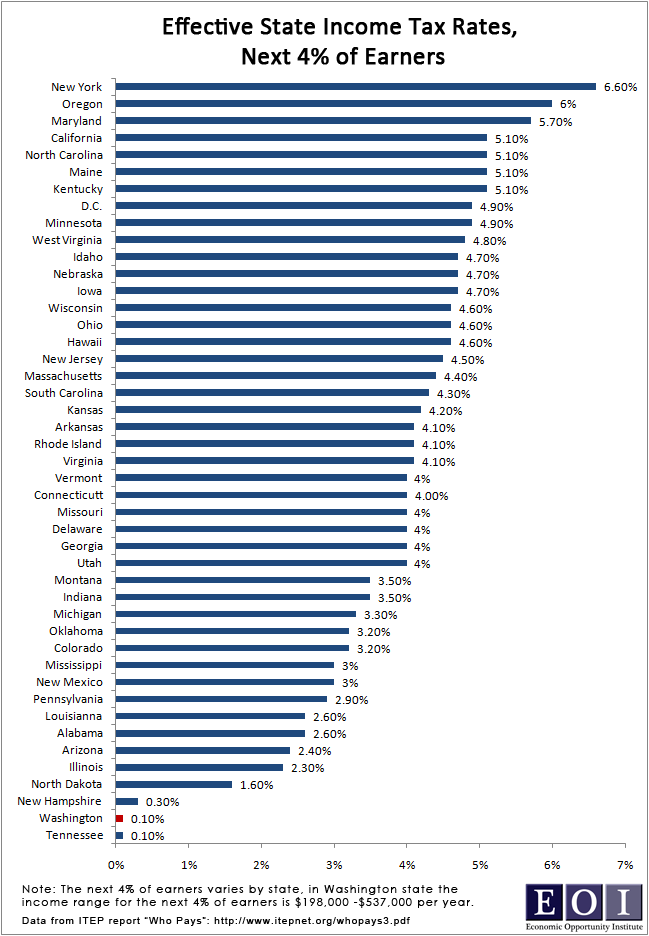One way to determine how I-1098’s proposed income tax compares to other states is to calculate and compare the effective tax rate for an individual filer at a particular income level, as we’ve already done here. But another way is to compare I-1098’s effective tax rate for a particular percentage of income earners across all states that have an income tax.
Which brings us to…the “chart of the week”: Under I-1098, how would Washington’s effective tax rate for the top 1% of income earners compare to other states with an income tax? Since the income range for the top 1% in Washington State is over $537,000, they’ll all be paying something — but maybe not as much as you might think:
It turns out that the effective income tax rate for the top 1% of incomes would rank Washington at just 27th out of the 45 states that tax income. Now let’s examine the effective tax rate for the next wealthiest 4%. In Washington State, this group brings home between $198,000 and $537,000 a year. How would I-1098’s effective income tax rate compare for them?
The effective income tax rate for that 4% of “next wealthiest” people would be the 2nd lowest in the nation; Washington would rank 44th out of 45.
What accounts for these low percentages? One reason is that I-1098’s tax rates themselves are quite low. Another is that I-1098 exempts individual income up to $200,000 or joint income up to $400,000. According to the IRS, roughly 85% of income tax returns with an adjusted gross income over $200,000 are joint returns — so under I-1098, those households would only pay tax on their joint income over $400,000.
By way of review, I-1098 proposes to:
- Lower residential and commercial property taxes;
- Exempt 81% of Washington’s small businesses from B&O taxes (up from 43%), and reduce them for another 12%;
- Create a 5% tax on income above $200,000 (individuals) or $400,000 (joint), and 9% on income above $500K/individual or $1 million/joint;
- Net a projected $1 billion a year in new revenue;
- Dedicate the new revenue to education and health programs with regular public audits to ensure compliance; and
- Require public voter approval to change the tax rates or thresholds.
Looking for more information about Initiative 1098? Visit the Economic Opportunity Institute website.
More To Read
March 24, 2025
Remembering former Washington State House Speaker Frank Chopp
Rep. Chopp was Washington state’s longest-serving Speaker of the House
February 11, 2025
The rising cost of health care is unsustainable and out of control
We have solutions that put people over profits
January 29, 2025
Who is left out of the Paid Family and Medical Leave Act?
Strengthening job protections gives all workers time they need to care for themselves and their families


